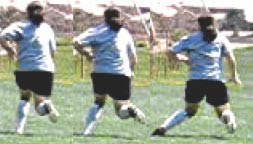If you are the runner or cyclist in your family, chances are you will be unwrapping some new gear this holiday season and getting ready to shed some of the calories you’ve either intentionally or unintentionally put on during the holidays. Whether you are a competitive veteran chomping at the bit to toe the line, or you are planing a training regimen for your first big race, one of the most exciting parts of doing a race is picking which one you’ll enjoy this year. The following is a list of some great local running races for you to gear up for, or to utilize as part of a training program for a bigger race.
1. Run through Redlands – March 8th 2015. 5K, 10K, 1/2M. This is a great run through some historic settings of Redlands. Prepare for some hill work as this run ascends from downtown through prospect park up to sunset before traversing back to the Redlands Bowl.
2. Highland Y Run – January 25 2015. 5K, 10K, and 1/2M. One of the best times to run in the Inland Empire is the winter while there are snow capped mountains and blooming citrus trees. All proceeds from this race go towards scholarships at the YMCA.
3. Citrus Heritage Run – January 10 2015. 5K and 1/2M. Ok, so maybe you should have already finished your training for this one. But if you are a seasoned runner, why not start the new year with an early run. This run is put on by a great local running group with proceeds benefiting local student athletes.
4. Redlands Chamber Night Light Run – December 27th 2014. 5K. The good news about this run, is not many people actually run it, rather they enjoy the show and move along a gradual pace. This run is in its 2nd year and the focus is have a good time while enjoying the lights around downtown Redlands. Look out for the Optimal Movement Physical Therapy Team this year!!!
5. Los Angeles Marathon – March 15, 2015. Marathon. If this race isn’t on your bucket list, it should be. It’s what most of the members of local run groups are training for and it is the best local marathon. The race course was changed several years ago to now incorporate a Dodger Stadium beginning and a Santa Monica finish (the one good thing Frank McCourt did for LA).
What local races are you looking forward to this year? Add your favorites in the comment section and let me know if I missed one. Remember to train safe and listen to your bodies rather than focus on a mileage goal. Also remember, you don’t run to be fit, you have to be fit to run. Let us know if you need our help with returning from an injury or optimizing your training plan to avoid an injury. Visit our website and get in touch with any running related questions you may have.












